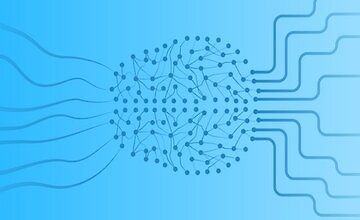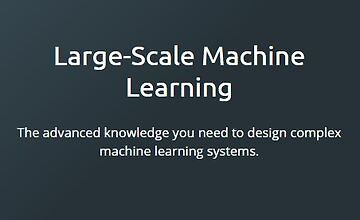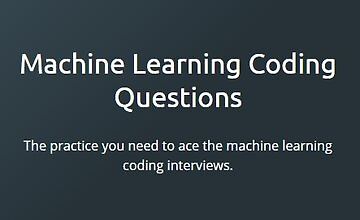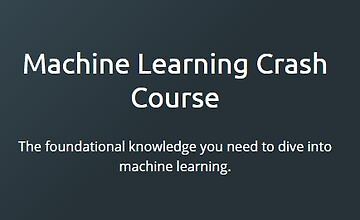
udemy
Udemy - одна из самых больших площадок в мире по доставке обучающего контента от разных авторов всего мира. Присутсвуют курсы практически на любую тему.
Machine Learning: Natural Language Processing in Python (V2)
Добро пожаловать в раздел «Машинное обучение: Обработка естественного языка в Python» (V2). НЛП: Используйте марковские модели, NLTK, искусственный интеллект, глубокое обучение, машинное обучение и науку о данных в Python.
Это обширный курс 4-в-1, включающий:
1) Векторные модели и методы предварительной обработки текста
2) Вероятностные и марковские модели
3) Методы машинного обучения
4) Методы глубокого обучения и нейронных сетей
В части 1, посвященной векторным моделям и методам предварительной обработки текста, вы узнаете, почему векторы так важны в науке о данных и искусственном интеллекте. Вы узнаете о различных методах преобразования текста в векторы, таких как CountVectorizer и TF-IDF, и изучите основы методов встраивания нейронов, таких как word2vec и GloVe.
Затем вы примените полученные знания для выполнения различных задач, таких как:
Попутно вы также изучите важные этапы предварительной обработки текста, такие как токенизация, выделение корней и лемматизация.
Вы кратко познакомитесь с классическими задачами НЛП, такими как тегирование частей речи.
Во второй части, посвященной вероятностным и марковским моделям, вы узнаете об одной из самых важных моделей во всей науке о данных и машинном обучении за последние 100 лет. Он применялся во многих областях помимо НЛП, таких как финансы, биоинформатика и обучение с подкреплением.
В этом курсе вы увидите, как такие вероятностные модели можно использовать различными способами, например:
Важно отметить, что эти методы являются необходимой предпосылкой для понимания того, как работают новейшие модели Transformer (внимание), такие как BERT и GPT-3. В частности, мы узнаем о двух важных задачах, которые соответствуют целям предварительной подготовки для BERT и GPT.
В части 3, посвященной методам машинного обучения, вы узнаете больше о классических задачах НЛП, таких как:
Этот раздел будет ориентирован на приложения, а не на теорию, а это означает, что вместо того, чтобы тратить большую часть наших усилий на изучение деталей различных алгоритмов машинного обучения, вы сосредоточитесь на том, как их можно применить к вышеуказанным задачам.
Конечно, вам все равно нужно кое-что узнать об этих алгоритмах, чтобы понять, что происходит. Будут использоваться следующие алгоритмы:
Это не просто «любые» алгоритмы машинного обучения / искусственного интеллекта, а скорее те, которые были основными в НЛП и, таким образом, являются неотъемлемой частью любого курса НЛП.
В части 4, посвященной методам глубокого обучения, вы узнаете о современных архитектурах нейронных сетей, которые можно применять для решения задач НЛП. Благодаря своей огромной мощности и гибкости нейронные сети можно использовать для решения любой из вышеперечисленных задач в курсе.
Вы узнаете о:
Изучение RNN будет включать современные архитектуры, такие как LSTM и GRU, которые широко используются Google, Amazon, Apple, Facebook и т. д. для сложных задач, таких как языковой перевод, распознавание речи и преобразование текста в речь.
Очевидно, что поскольку новейшие Трансформеры (такие как BERT и GPT-3) являются примерами глубоких нейронных сетей, эта часть курса является необходимой предпосылкой для понимания Трансформеров.
Это пробный урок. Оформите подписку, чтобы получить доступ ко всем материалам курса. Премиум

Udemy - одна из самых больших площадок в мире по доставке обучающего контента от разных авторов всего мира. Присутсвуют курсы практически на любую тему.

Заинтересованы в использовании машинного обучения в приложениях и веб-сайтах JavaScript? Тогда этот курс для вас! Это учебник, который вы искали, чтобы стать современным мастером машинного обучения JavaScript в 2022 году. Он не просто охватывает основы, к концу курса у вас будут расширенные знания в области машинного обучения, которые вы сможете использовать в своем резюме. От абсолютного нуля до мастера — присоединяйтесь к революции Tensor

Передовые знания, необходимые для проектирования сложных системы машинного обучения. Добро пожаловать в нашу серию статей о крупномасштабном машинном обучении! Здесь мы действительно углубимся в некоторые из наиболее практических приложений в этой области и снабдим вас инструментами, необходимыми для проектирования и создания сложных систем машинного обучения для предприятий корпоративного уровня.

Практика, необходимая для успешного прохождения интервью по программированию машинного обучения. Освойте основные алгоритмы и структуры данных и получите работу своей мечты с AlgoExpert.

Базовые знания, необходимые для погружения в машинное обучение. Цель этого курса проста и уникальна по своей природе: вооружить вас базовыми знаниями, необходимыми для успешного прохождения любого собеседования по машинному обучению и получения работы в отрасли. Давай приступим к работе!

Изучите науку о данных, анализ данных, машинное обучение (искусственный интеллект) и Python с Tensorflow, Pandas и много другого! Это совершенно новый курс по машинному обучению и науке о данных, который был запущен в январе 2020 года! Выпускники курсов Андрея теперь работают в Google, Tesla, Amazon, Apple, IBM, JP Morgan, Facebook и других ведущих технологических компаниях.